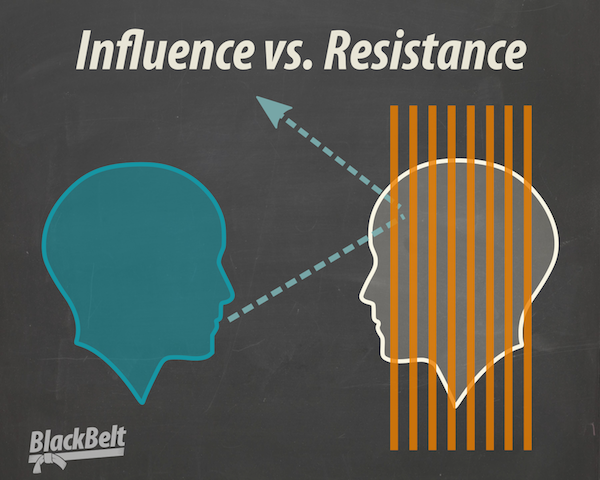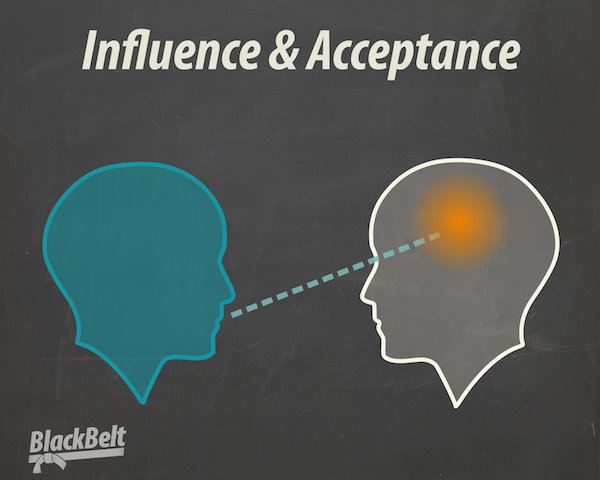Hands down, email marketing is one of the most effective tools for converting prospects to clients.
Why is it then, that most coaches either don’t do it well or don’t do it all?
The obvious answer is that writing is hard.
You find yourself staring at a blank screen for hours, and the words just won’t flow.
Even worse – after pouring your blood, sweat, and tears into writing and sending it out – no one responds. It can be maddening, so a lot of coaches give up on email marketing.
The reason most coaches find it so difficult is that they don’t know where to start. They don’t know the best way to teach, influence, and sell through email marketing.
How To Dissolve the Resistance
I once took a marketing communications class where the professor referred to marketing as an influence. He said that when we are trying to influence someone, we are sending them a message.
However, every person has their own set of unique experiences that form beliefs, and beliefs form layers of resistance.

If your message is too blunt, it’s met with resistance and doesn’t get through to the prospect. If you say, “Hey, I’m the best coach of all time, and you should definitely sign up for my live event,” they’ll believe that you’re either arrogant or lying, and they won’t sign up. Even if you actually believe you are the greatest coach of all time, the message won’t get through to them.
If we really want to dissolve the resistance, we can’t expect to change their beliefs. We must change our message. The best way to take prospects from being resistant to being receptive is through telling stories.

If you’ve ever read a book to a child, you know the excitement I’m talking about when reading a story. They can’t wait to hear the end. Everything else around them seems to fade away, and the story is all that matters.
Adults are the exact same way. We’re just kids with better excuses.
Storytelling Leads to Story Selling
In case you don’t already know, you have hundreds of stories to tell. In your work, you have experiences with your clients. You’ve watched the business grow and fail all around you. Outside of your working life, you have a personal life – and a past – all filled with stories.
John Carlton is one of the most successful and sought-after copywriters around today. He said that most people live boring lives. They get home from their boring jobs to watch boring TV. They may even hang out with their boring friends on occasion. Nothing exciting happens in their world.
The idea is to establish yourself as a person that they can live vicariously through. You do that by telling stories
Some of my most effective emails, in terms of conversion, have stories that have nothing to do with business (on the surface, anyway). Prospects connect with the story, so when I relate it back to business, they’re open to hearing my message.
Your job is to fill your emails with stories so that prospects can connect with you and build up their trust in you. When they open up and become receptive to what you have to say, you give them the lesson. This lesson relates to your work, your business, or the value you can provide them.
Then, you make your offer.
The Easy Way to Story Sell
As a coach, if you’ve had any success at all with a client, you already have the easiest kind of story to tell: CASE STUDIES.
This is just a story of a client who was struggling. Then, you stepped in and did something magical – either for them or with them – and everything turned around.
It’s simple but extremely effective, and any coach can tell this kind of story.
Every case study has three basic parts.
- The Problem – What was the client struggling with?
- The Action – What did you do to help the client?
- The Happy Ending – What were the results and how did it benefit the client?
Stories are powerful because the audience wants to relate to the hero. It happens in every captivating book you read and every entertaining movie you see. You put yourself in the shoes of the hero and experience the journey with them.
When you tell the story of a case study, prospects inject themselves into it. They feel what the client was feeling as they read it. They’ll feel the pain and stress that the client felt, the hope of you stepping in and helping, and the victory when the problem was solved.
You want your prospects to experience this. When they project themselves into the story where the client wins, their appreciation for you grows. If they can see themselves as the hero of the case study, it makes you look even better.
If you can do this, your prospects will be more open and receptive to offers you make.
If we really want to dissolve our prospect’s resistance, we can’t expect to change their beliefs.
Share your thoughts on this. I’d love to hear them. Comment below.
P.S. Whenever you’re ready… here are 4 ways I can help you grow your coaching business:
1. Grab a free copy of my book
It’s the roadmap to attracting prospects, signing clients, and scaling your coaching business. — Click Here
2. Join the Coach Dojo and connect with coaches who are scaling too
It’s our new Facebook community where smart coaches learn to get more income, impact, and independence. — Click Here
3. Join our Implementation Program and be a Case Study
I’m putting together a new coaching case study group at Black Belt this month… stay tuned for details. If you’d like to work with me on your client-getting and scale plans… just send me a message with the words “Case Study”. — Click Here
4. Work with me and my team privately
If you’d like to work directly with me and my team to take you from 6 to 7 figures… just send me a message with the word “Private”… tell me a little about your business and what you’d like to work on together, and I’ll get you all the details! — Click Here





Leave a Comment